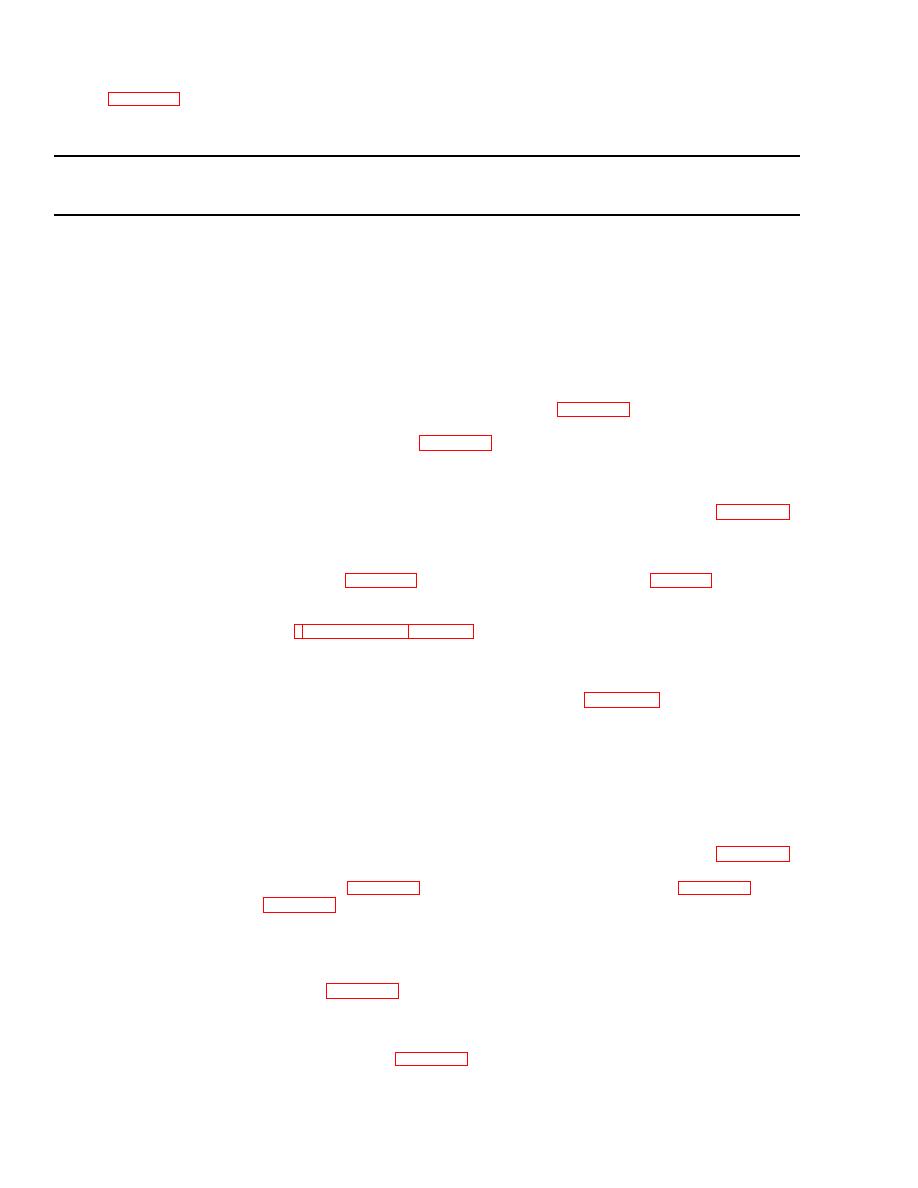
| Tweet |

Custom Search
|
|

|
||
 TM 55-1905-217-12
4-14. Troubleshooting
NOTE
Refer to Table 4-3. This table provides trouble-
Before you use this table, be are you have pe-
shooting instructions for the organizational
formed all applicable operating checks.
maintenance level.
Table 4-3. Troubleshooting - Organizational
MALFUNCTION
TEST OR INSPECTION
CORRECTIVE ACTION
ENGINES
1. HARD STARTING
Step 1. Check fuel pump relief valve to determine if properly seated.
Test fuel flow as follows:
(1) Disconnect fuel return tube and hold open end of the tube in a suitable receptacle.
(2) Start and run engine at 1,200 rpm and measure fuel flow from return tube for one
minute. It should be at least 1/2 gallon.
(3) Be sure all tube connections between the fuel supply and the pump are tight so that no
air will be drawn into the fuel system; then immerse the end of the fuel tube into the fuel In
the container. Air bubbles rising to the surface of the fuel will indicate a leak on the suction
side of the pump. If flow is inadequate replace pump (para 4-29).
Step 2. Check for defective starting motor.
Inspect brushes, replace if worn (para 4-48).
2. UNEVEN RUNNING OR FREQUENT STALLING
Step 1. Check for low coolant temperature.
The thermostat may not be closing. Remove, inspect, and test the thermostat. Install a new
thermostat if necessary. Check the thermostat seal. Replace it if necessary (para 4-44).
Step 2. Test for insufficient fuel flow.
Test fuel flow (1. above).
Step 3. Check for faulty injectors.
Check injector timing (para 4-28) and the position of the fuel racks (para 4-1).
Step 4. Check for governor instability.
Engine hunting may be caused by binding governor-to injector linkage or by faulty adjust
ment Refer to paragraphs 4-30 and 4-41.
3. LACK OF POWER
Step 1. Check for insufficient air.
Remove air box covers and inspect the cylinder liner ports. If port are over 50 per-
cent plugged, clean them. Check compression pressures (para 4-20).
Step 2. Check for insufficient fuel.
Test fuel flow (1. above).
4. DETONATION
Step ,1. See if oil is picked up air stream.
Check for a defective blower-to-cylinder block gasket. Replace the gasket if necessary. If
the blower has been removed, install a new gasket. Refer to direct or general support.
Step 2. Check for low coolant temperature.
The thermostat may not be closing. Remove, inspect, and test the thermostat. Install a new
thermostat if necessary. Check the thermostat seal. Replace it if necessary (para 4-44).
Step 3. Check for faulty injectors.
Check injector timing (para 4-28) and the position of each injector rack (para 4-30). Check
injectors (para 4-28) for spray tip holes enlarged or broken spray tip. Replace all injectors
found faulty.
5. HIGH LUBRICATING OIL CONSUMPTION
Step 1. Check for leaking oil cooler core.
Check the engine coolant for lubricating oil contamination. If contaminated, replace
the oil cooler core (para 4-25).
6. LOW OIL PRESSURE
Step 1. See if oil cooler is clogged.
A plugged oil cooler is indicated by an excessively high lubricating oil temperature. Remove
and clean the oil cooler core (para 4-25).
4-9
|
||
 |
||